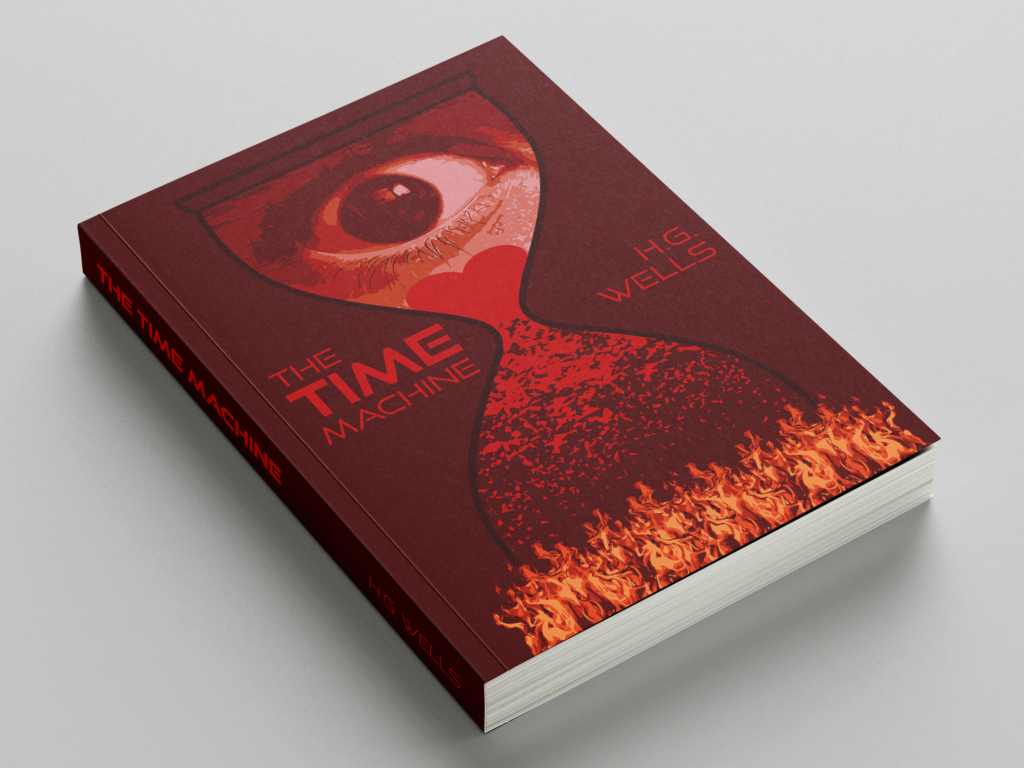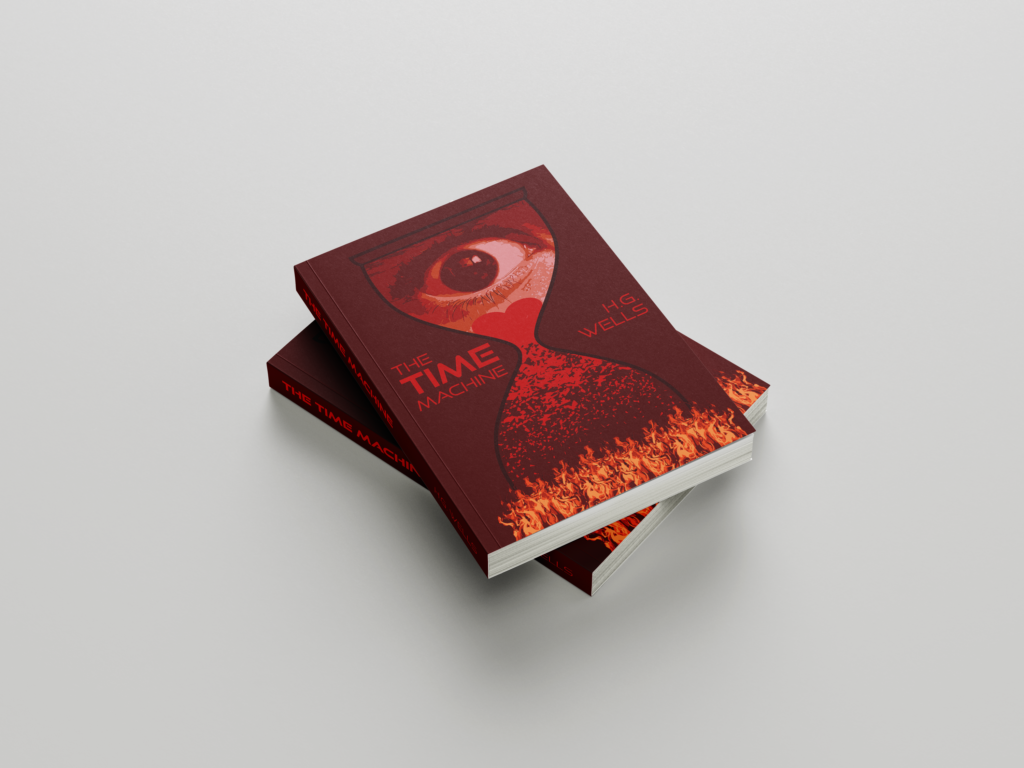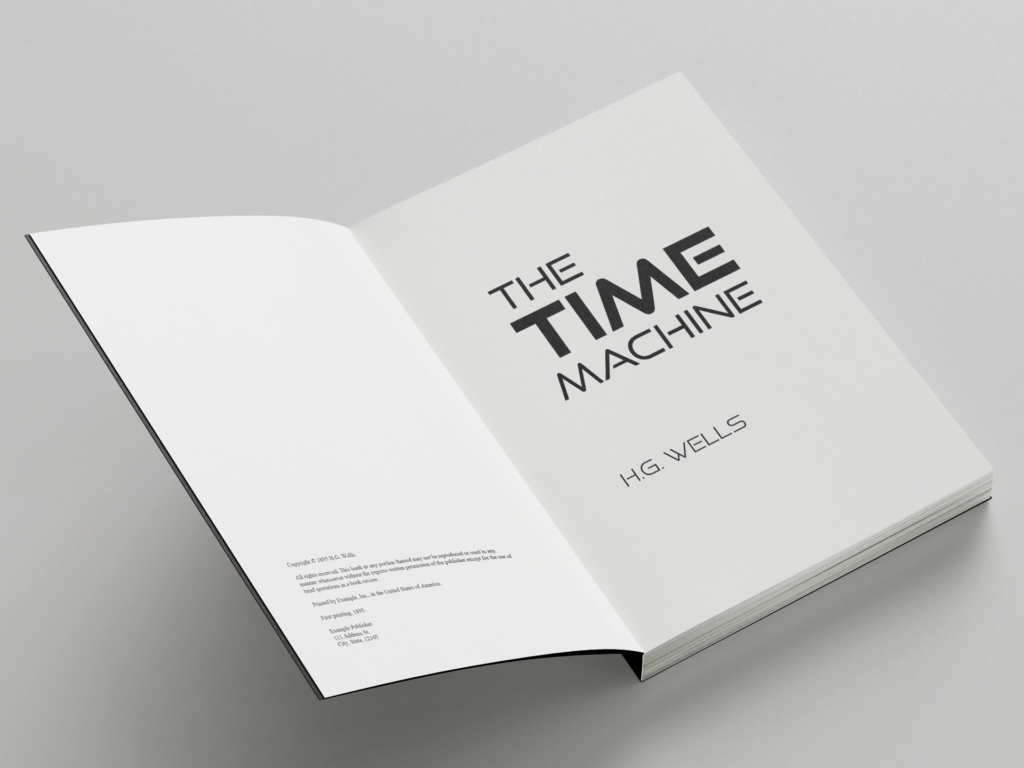The Time Machine Book Cover
Book Cover Project
Objective
The goal was to use type and image together to design a book cover. Become familiar with the story. Make a list of words and/or themes that are prominent in the story. Use these words to create imagery that support the story. Integrate type and imagery into a cohesive narrative inspired by the content.
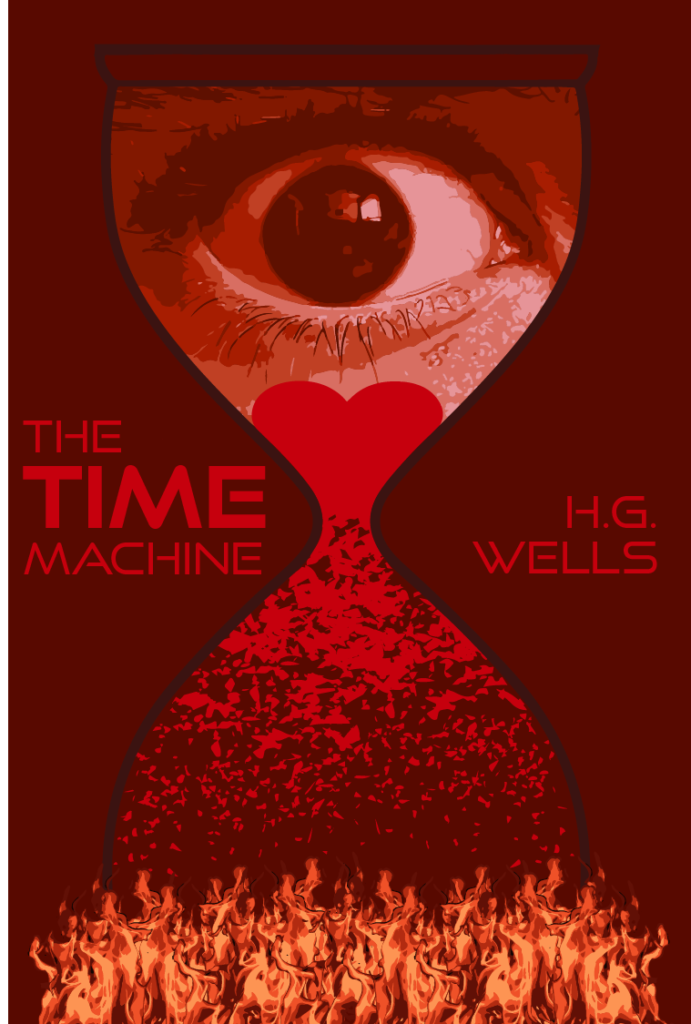

BOOK SUMMARY
The Time Machine, H. G. Wells’s novel, is a story that follows a Victorian scientist, who claims that he has invented a device that enables him to travel through time, and has visited the future, arriving in the year 802,701 in what had once been London. There, he finds the future race, or, more accurately, races, because the human species has “evolved” into two distinct forms. Above ground live the Eloi—childish creatures, whose existence appears to be free of struggle. However, another race of beings exists—the Morlocks, underground dwellers who, once subservient, now prey on the feeble, defenseless Eloi. The novel is an allegory, as well as a scientific parable, in which the two societies of Wells’s own period (the upper classes and the “lower orders”) are recast as equally, though differently, “degenerate” beings. Wells represents a world in which the human struggle is doomed to failure.
— Encyclopedia Brittanica
Initial Sketch Ideas
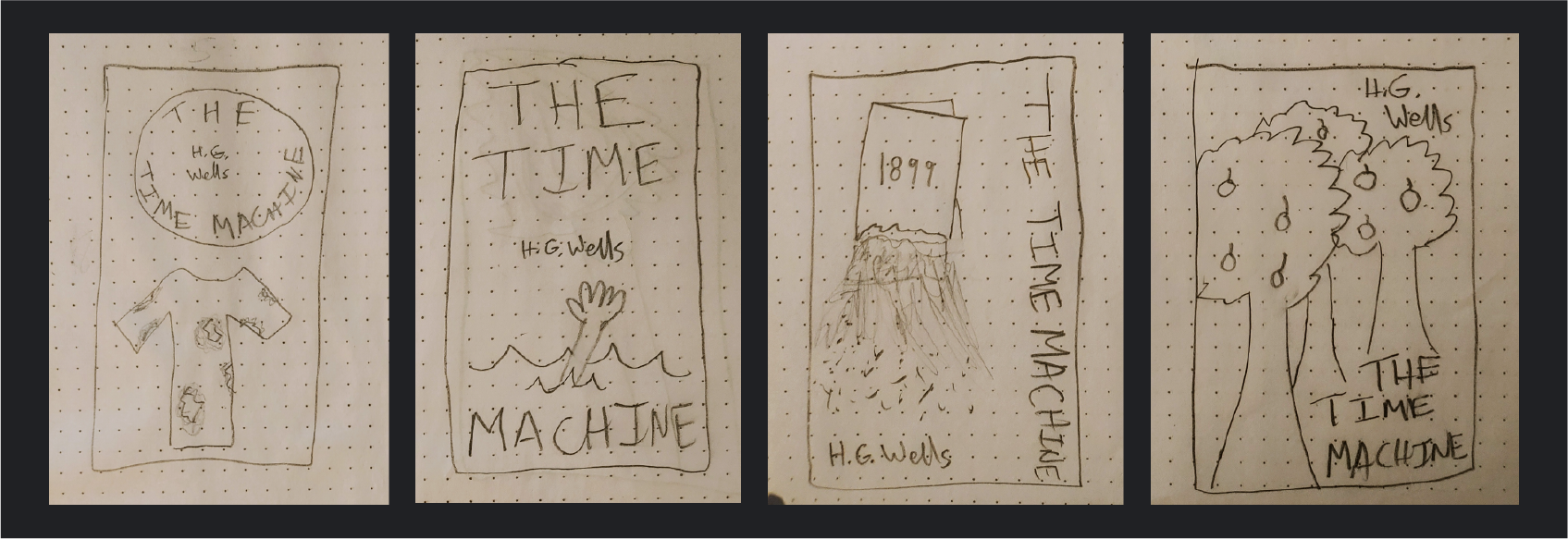
Draft Evolutions

Commentary
I intertwined 4 symbolic elements: a horrified eye, a crumbling heart, the hourglass, and fire.
- The eye shows time traveler’s observation of the alarming future. The eye is put at the top of the hour glass to show the time traveler’s journey of traveling through time. His starting point is in the past, and the ending point (bottom of the hour glass) is the future. The middle of the hourglass represents the point at which things start to change in the future.
- The crumbling heart is symbolic of how the Eloi people in the story have lost their humanity and compassion, as well as a disconnect from their emotions.
- The fire represents the destruction of humanity as we know it, due to the loss of compassion, emotions, and knowledge.
- The hourglass on it’s own represents the change in time. It also holds the rest of the symbols together cohesively.
Conclusion
The book cover for The Time Machine accurately portrays several symbolic elements and themes found within the novel. It really catches your attention, and shows the dystopian future the author was portraying.

